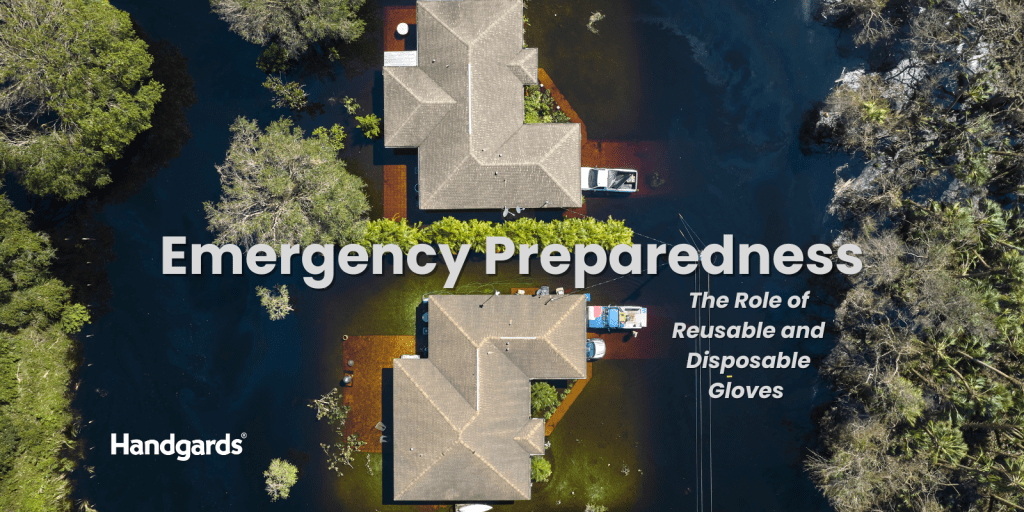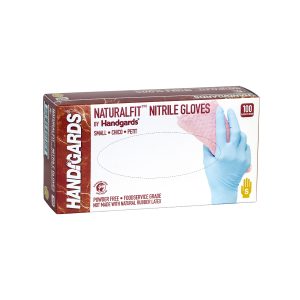Safeguarding Operations, One Glove at a Time

Emergency Preparedness in the Food and Beverage Industry: Safeguarding Operations and Public Health
The food and beverage industry provides nourishment and sustenance to millions of people daily. However, natural disasters like hurricanes, earthquakes, floods, and wildfires pose significant threats to this sector, jeopardizing both business operations and public health. It is crucial for foodservice establishments to implement robust emergency preparedness plans that address the continuity of operations but ensure food safety and the well-being of employees and customers. One essential aspect of this preparedness is adhering to proper hygiene practices, particularly during cleaning and sanitizing efforts, as outlined by the Centers for Disease Control and Prevention (CDC) guidelines.

The Role of Reusable Gloves During Emergencies: Cleaning and Sanitizing
One of the most important hygiene practices that should be adhered to in an emergency is the proper washing of hands as well as the proper use of gloves, especially during cleaning and sanitizing activities. CDC states that it is important to “wear safety gear, including N95 masks, boots, and gloves to clean properly after natural disaster” in its booklet What to Do to Prevent Getting Hurt or Sick After a Disaster | Natural Disasters | CDC.
In a post-disaster scenario, employees may be tasked with cleaning and sanitizing equipment, surfaces, and food storage areas that may have been exposed to floodwaters. The use of gloves is essential to ensure that workers do not inadvertently transfer contaminants from one surface to another. It also protects workers from exposure to harmful chemicals in cleaning agents.
Handgards has the perfect glove for the task: Heavy-Duty Nitrile Reusable Gloves, available in standard length (12”) or elbow-length (19”). Both options feature a heavy-duty non-slip grip with straight cuffs for a clean fit and are individually poly bagged. Include these durable green nitrile gloves in your emergency preparedness plan: plan ahead and have peace of mind preparing for the unexpected.

The Role of Disposable Gloves During Emergencies: Food Safety
A second, but no less important, hygiene practice following an emergency to wear gloves to help reduce the risk of cross-contamination when handling potentially hazardous materials, such as contaminated food. The Food and Nutrition Service of the USDA recommends in its Food Safety Emergency Response Pocket Guide: Disaster Edition to wear gloves when handling food in order to stop transmitting germs, ensuring that gloves are changed often when damaged, contaminated, or switching tasks. Also, hands should be washed thoroughly before and after glove use. Workers should be trained to recognize the importance of glove use and proper hand hygiene, ensuring that gloves are used in conjunction with other sanitation protocols for maximum effectiveness.
One option to have on hand for emergency are Handgards Nitrile Disposable Gloves, available in blue or black, which provide outstanding resistance to puncturing and provide a premium tight fit that has a bare hand feel with extra strength and durability. These gloves offer superior protection when handling potentially contaminated food, a must for any emergency preparedness plan.
Conclusion
Emergency preparedness in the food and beverage industry is not just about keeping operations running; it’s about ensuring the safety of both employees and customers during times of crisis. Natural disasters can strike without warning, but with a well-structured plan in place, businesses can minimize disruptions and maintain a high level of food safety. The proper use of gloves and following FDA, FNS, and CDC hygiene guidelines during cleaning and sanitation is a critical part of this preparation. By prioritizing safety, communication, and hygiene, the foodservice industry can navigate the challenges of a natural disaster while safeguarding public health.